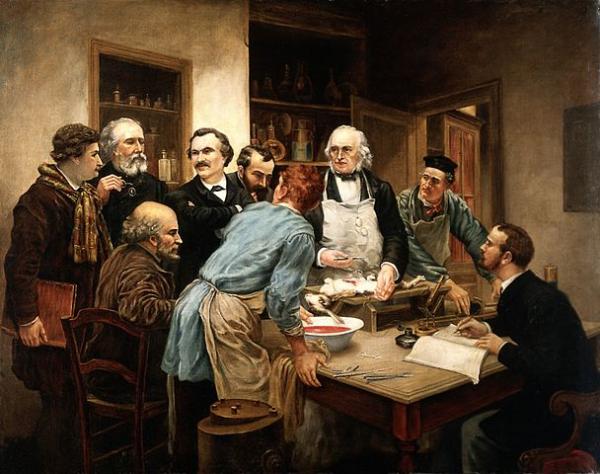Human physiology is complex, involving many chemical, cellular, and neuronal mediators. As a result of the multiplicity of interactions, there are continuous, tiny fluctuations, whether we measure chemical or electrical biomarkers. For example, there are slight variations in our heart rate – a typical heart beating 60 times a minute, may beat .9 seconds on one occasion and 1.1 on another. All the tiny variations hover around the aggregate of 60.
Homeostasis is not a static point; it describes a range or cloud of minute differences. Fractal regulation defines the cloud. Consider this metaphor. Homeostasis is the typical Gaussian bell curve. Fractal regulation describes the skew, how the curve is distorted from its regular bell shape.
As it turns out, these minute variations have two interesting properties. First, these patterns replicate, appearing over a range of time scales and activity. The tiny fluctuations we see in one minute are more similar than not to the variations we see over an hour or a day. And the patterns hold when we are exercising or standing around; they are remarkably stable.
That stability has one exception when your physiology changes. From a medical point of view, you have developed early, clinically unrecognized, "precursors" to disease. The small variations become less various, more the same – the minute changes disappear. The disappearance of those variations occurs because your complex physiology is becoming less resilient, so it doesn't "bounce around" as much. That exception makes it possible that these fractal patterns can identify disease.
Previous studies have shown that fractal regulation of motor activity can predict the onset of Alzheimer's disease many years before its clinical onset. [1] The researchers asked a more general question. Was the loss of fractal regulation in motor activity associated with frailty, disability, and all-cause mortality?
The motor activity was captured using a "watch-like" device (think a medical FitBit), so it is both non-invasive and unobtrusive, on roughly 1400 patients age 56 to 100 followed for a mean of six years. The motor activity the researchers investigated was not the participants' actual physical activity, but the subtle alterations in that fractal regulation – can we recover from extremes or are our adaptive responses blunted with age. The data on movement was collected upon entrance to the study for a period of up to 10 days; frailty and disability were subsequently determined annually.
Patients were categorized based on their loss of fractal regulation into ten groups or deciles. The researchers compared those in the lowest decile (the most significant loss of fractal control) with those in the highest group (the most preserved fractal regulation).
- Of 936 participants not frail initially, 31% became frail over a mean of 4.7 years. Those in the lowest decile had a 30% greater chance of becoming frail compared to those in the 90th percentile – it was "equivalent to being 3.3 years older at baseline."
- Of 1073 participants without baseline disability, almost 50% developed some impairment of the activities of daily living over a mean 4.2 year period. Depending on how disability was measured [2], those in the lowest decile had a 25 to 30% greater chance of being disabled – it was equivalent to being 1-2.6 years older than their chronologic age.
- Of 1275 participants, 42% died over a mean of 5.8 years. Older age, male gender, or having less education were all associated with an increased risk of death. When accounting for those demographics, those in the lowest decile had a 26% greater chance of dying – equivalent to two years older at baseline.
The study suggests that as we age and our fractal regulation declines, we become "less adaptive to perturbations and more vulnerable to catastrophic events." Those subtle changes, manifested by, in this instance, physical activity, occur approximately four years before clinically observed frailty or disability.
It seems that aging maybe like the death of a thousand cuts – tiny changes, for a while reversible, but as they accumulate less and less so. What we recognize as diseases are no more than the more common pathways those tiny changes take. Our resilience or frailty are aggregate measures. It remains unclear whether this early warning comes too late, that rehabilitation may be futile. After all, we are looking at an outcome, motor function, that is the result of a variety of systems, our muscles, blood flow, neurologic signaling, any of which can by themselves or in combination be the underlying "cause." In the meantime, eating well and in moderation, being physically active, and spending less time having to choose 'fight or flight' may be the most supportive measures we can take.
[1] Patients with less and less fractal regulation were a higher risk for Alzheimer's Disease, and their course appeared more accelerated.
[2] Disability can be measured in many ways. It can be measured as mobility, cognition, or specific activities like bathing, dressing, or eating.
Source: More random motor activity fluctuations predict incident frailty, disability, and mortality Science Translational Medicine DOI: 10.1126/scitranslmed.aax1977
The image of Claude Bernard, the "father of modern physiology," is courtesy of the Wellcome collection.




